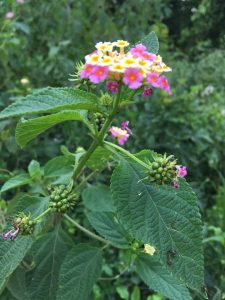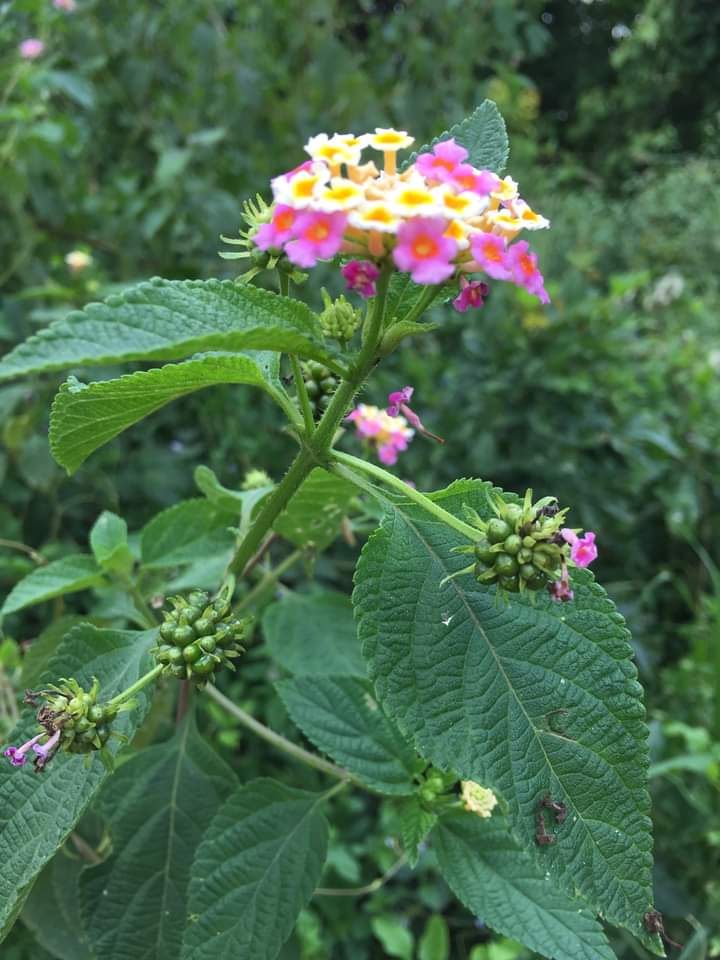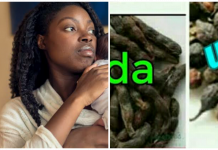Side Effects and health benefits of ananse dokono plant. Uses of ananse dokono plant
What is Ananse Dokono? Ananse dokono (Twi name) called Lantana Camara or common Lantana in English is a very popular plant or herb in Ghana. Ananse dokono is used in Ghana for its medicinal property , health benefits and even “spiritual uses”… In traditional Ghana, ananse dokono is popular for its spiritual uses but this is beyond the scope of this article.
Just recently , a Ghanaian lady messaged me asking me to summarise the Heath benefits of ananse dokono (Lantana Camara) for her. She was doing a research about the leaf as her final project…after talking to many elderly Ghanaians about ananse dokono and sourcing the internet about the leaf, here is a summary of the benefits of this wonderful plant – ananse dokono….
To make this article easy to understand , here is the image or pictures ananse dokono leaf or plant.

Traditional Uses and Health benefits of ananse dokono
👉Ananse dokono plant has antimicrobial, fungicidal, insecticidal, and nematocidal properties.
👉Essential oil obtained from the ananse dokono plant is used for the treatment of skin itches, wounds, leprosy, and scabies.
👉Root of ananse dokono is used for influenza, cough, mumps, fever, malaria, toothache, headache, etc.
👉Flowers of ananse dokono are used for hemoptysis (vomiting of blood) and pulmonary tuberculosis.
👉Conditions like constipation, high blood pressure, dermatitis, eczema, measles, urethral inflammation, colds, and bronchitis among others can also be treated using plant parts of ananse dokono
👉Ananse dokono plant is often used in domestic medicine and research carried out mainly in Ghana and India has shown it to contain a number of compounds with medicinal activity.
👉Extracts from the Popular ananse dokono have shown antimicrobial, fungicidal, insecticidal and nematicidal activity.
👉Lantana camara essential oil is occasionally used for the treatment of skin itches, as an antiseptic for wounds, and externally for leprosy and scabies.
👉Ananse camara is applied as a poultice on rheumatic joints.
👉Roots of ananse dokono is sweet and bitter tasting, refrigerant, antifebrile.
👉Decoction of ananse dokono is used to treat influenza, cough, mumps, incessant high fever, malaria, cervical lymph node tuberculosis, asthma, toothache, headache, inflammation, gonorrhea and leucorrhoea.
👉Flowers are sweet tasting, mildly cooling and haemostatic.
👉Decoction of the dried flowers of ananse dokono is used in the treatment of haemoptysis and pulmonary tuberculosis.
👉Leaves of ananse dokono are aromatic with a minty taste, they have a cooling nature, are anti-phlogistic, and anti-dermatosic, diaphoretic, febrifuge, pectoral, stimulant, tonic and vulnerary.
👉An infusion of the leaves of ananse dokono and flowering tops is used in the treatment of fevers, constipation, tuberculosis, catarrh and bronchitis.
👉A combo of the leaves of Cymbopogon citratus, and ananse dokono are used as an infusion to treat colds, high blood pressure and malarial fever.
👉Externally, the leaves and stems of ananse dokono are used as a wash to treat dermatitis, eczema, pruritus, measles and chickenpox rashes etc.
👉They are applied as a poultice to treat sprains, wounds and contusions.
👉When soaked in water for 24 hours and used as douche , ananse dokono help to treat inflammations of the uterus.
👉Decoction of the bark is used as a treatment for fevers.
👉Plant extracts from ananse dokono are used in folk medicine for the treatment of cancers, chicken pox, measles, asthma, ulcers, swellings, eczema, tumors, high blood pressure, bilious fevers, catarrhal infections, tetanus, rheumatism and malaria.
👉Tea prepared from the ananse dokono leaves and flowers was taken against fever, influenza and stomach-ache.
👉Infusion of the whole ananse dokono plant was used for bronchitis and the powdered root in milk was given to children for stomach-ache in Ghana.
👉It was recommended that it may be useful in reducing fevers, and as a treatment of asthma and hypertension.
👉Decoction of ananse dokono fresh roots used as gargle for toothaches, and a decoction of the leaves and fruits to clean wounds in Twi Ghana .
👉Decoction or syrup of roots of ananse dokono (in sugared water) used for asthma.
This article is the intellectual property of www.nimedhelth.com.ng
👉Decoction of ananse dokono plant is used for tetanus, rheumatism, malaria.
👉Decoction of fresh leaves is used as gargle for toothaches.
👉 Decoction of leaves is used internally as emetic.
👉An aromatic infusion of the ananse dokono leaves and flowering tops, sometimes mixed with Ocimum, is used as febrifuge and diaphoretic in West Africa.
👉 Ananse dokono leaf herbal preparations is used as stimulant
👉Infusion of leaves is used for bilious fevers and catarrhal affections.
👉Ananse dokono lotions are used externally for eczematous eruptions.
👉Infusion of flowers is used as pectoral for children.
👉Tincture of the bark of ananse dokono plant is used as tonic.
👉Pounded leaves of ananse dokono are used as antiseptic for cuts, ulcers and swelling.
👉Decoction of leaves and fruits is used for wounds.
👉For men, ananse dokono is used to treat erectile dysfunction, premature ejaculation and boost sperm count. Ananse dokono helps a man last longer in bed.
👉Many Ghanaian women use ananse dokono to boost ovulation, restore ceased menstruation and increase their chances of getting pregnant.
CAVEAT: Ananse dokono is not safe in pregnancy ..it can cause miscarriage, congenital birth abnormalities, and pregnancy loss.
Side Effects of ananse dokono
The is nothing in this life without side effects and ananse dokono, no matter the well celebrated medicinal uses and health benefits,a also has its side effects.
Some of the side effects of ananse dokono are;
1. Allergy
2. Abdominal pains
3. Pregnancy loss
4. If not used in meditation, ananse dokono may damage the liver and kidneys…no report about this yet though.
5. Vomiting.
NB: The health benefits of ananse dokono highlighted in this article are mainly from folktales….some are however, science backed.
Contributions:
HEALTHBENEFITSTIMES.
www.nimedhealth.com.ng…
Ghana plants history
























